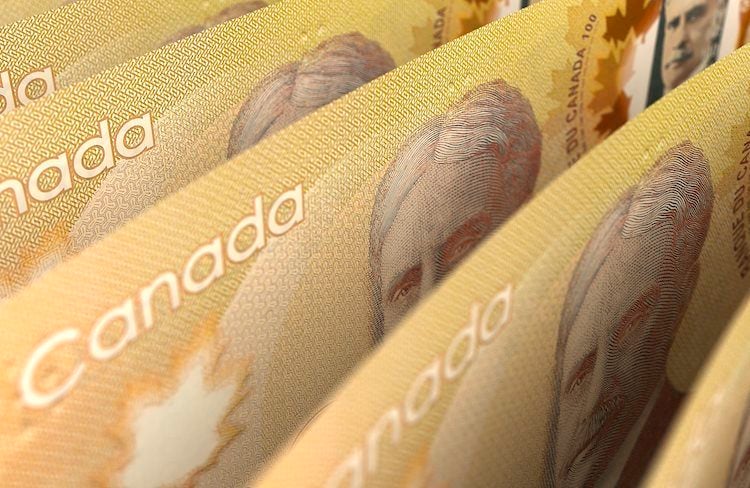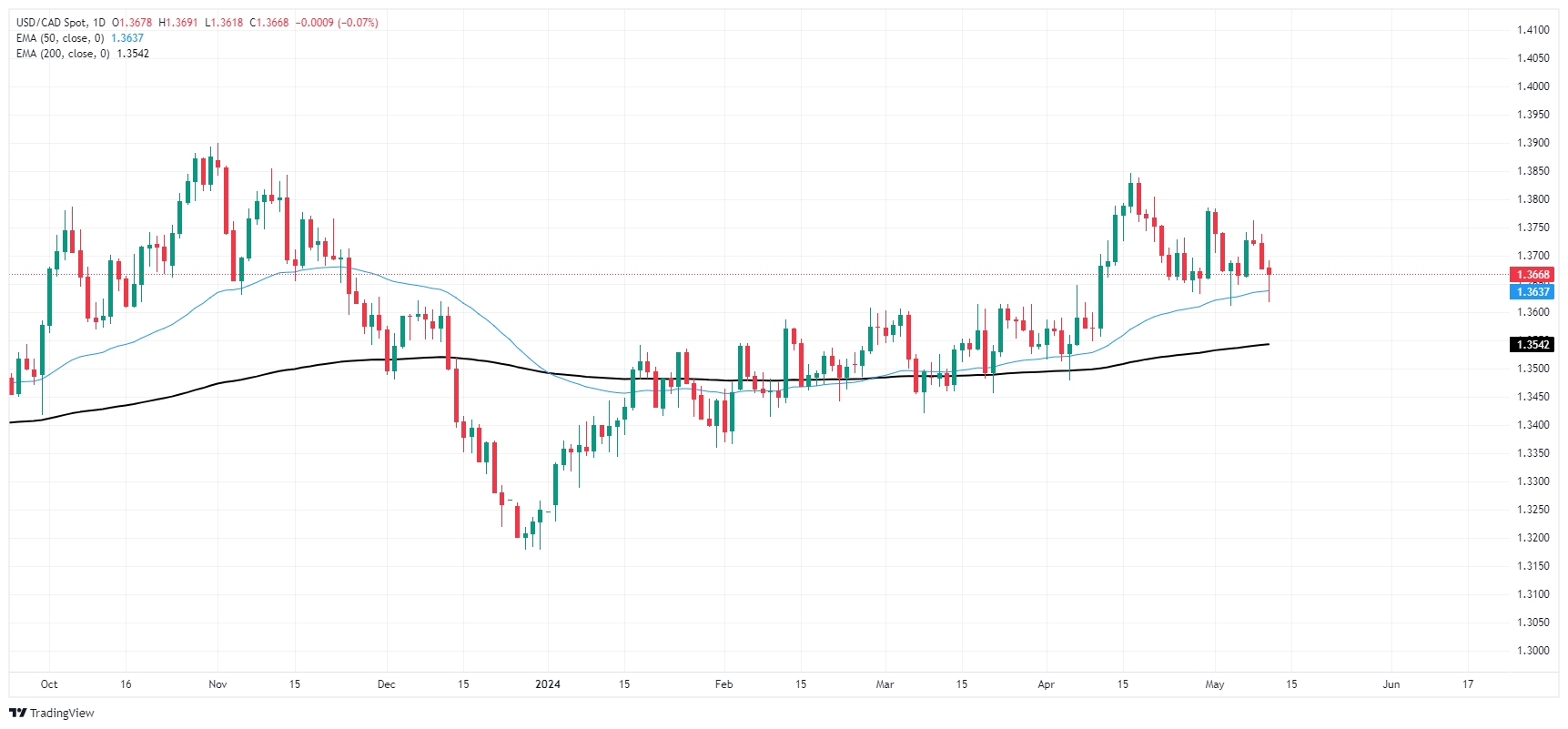Jobs
Canadian Dollar churns as risk-off market flows compete with CAD jobs data

- Canadian Dollar climbed on Friday, but Greenback remains popular bid.
- Canada added far more jobs than expected in April.
- US consumer sentiment tumbled, Fedspeak crimping rate cut hopes.
The Canadian Dollar (CAD) surged on Friday after the Canadian economy added five times as many jobs as analysts expected. However, risk-off market sentiment is limiting the CAD’s gains as the Greenback remains a popular destination for investors leery of hawkish Fedspeak and sour US consumer sentiment data.
Canada saw its highest net job gains in April since February of 2023, adding nearly 100K jobs to the Canadian economy, while the unemployment rate remained pinned at 6.1%. On the US side, both consumers and Federal Reserve (Fed) policymakers both see inflation sticking around higher and longer than rate-cut-hungry market participants have been hoping for. Risk appetite on Friday is on the wobbly side, limiting gains for the CAD.
Daily digest market movers: Canadian Dollar supported by jobs growth, but markets keep one foot in safe havens
- Canada gained 90.4K net jobs in April, beating the 18K forecast fivefold and erasing previous month’s -2.2K decline.
- Canadian Unemployment Rate held steady at 6.1%, beating market’s expected uptick to 6.2%.
- University of Michigan’s US Consumer Sentiment Index for May declines to 67.4, the sentiment survey’s lowest print in six months.
- UoM 5-year Consumer Inflation Expectations also rose to 3.1% as US consumers expect to be beleaguered by continued price acceleration looking forward.
- Souring consumer sentiment and still-high inflation expectations are hampering market hopes for rate cuts, keeping investors bid into the safe-haven Greenback.
- Fedspeak is doing little to bolster markets as Fed officials talk down odds of rate cuts in 2024.
- Read more:
Technical analysis: Canadian Dollar gains ground on Friday, but Greenback close behind
The Canadian Dollar (CAD) saw broad-market gains on Friday, hitting the green against all of its major currency peers. The CAD is up around a third of a percent against the New Zealand Dollar (NZD) and the Japanese Yen (JPY), while gaining around a quarter of a percent against the Australian Dollar (AUD). However, the CAD is close to flat against the US Dollar (USD) and the Pound Sterling (GBP), trading within a tenth of a percent at the time of writing.
USD/CAD tested below 1.3620 after plunging deep into a near-term demand zone before recovering back above 1.3660. The pair remains capped by the 200-hour Exponential Moving Average (EMA) at the 1.3700 handle.
The pair continues to find technical support from the 50-day EMA at 1.3637, but topside momentum remains limited. USD/CAD is beginning to consolidate after pulling back from the last swing high into 1.3850.
USD/CAD hourly chart
USD/CAD daily chart
Canadian Dollar FAQs
The key factors driving the Canadian Dollar (CAD) are the level of interest rates set by the Bank of Canada (BoC), the price of Oil, Canada’s largest export, the health of its economy, inflation and the Trade Balance, which is the difference between the value of Canada’s exports versus its imports. Other factors include market sentiment – whether investors are taking on more risky assets (risk-on) or seeking safe-havens (risk-off) – with risk-on being CAD-positive. As its largest trading partner, the health of the US economy is also a key factor influencing the Canadian Dollar.
The Bank of Canada (BoC) has a significant influence on the Canadian Dollar by setting the level of interest rates that banks can lend to one another. This influences the level of interest rates for everyone. The main goal of the BoC is to maintain inflation at 1-3% by adjusting interest rates up or down. Relatively higher interest rates tend to be positive for the CAD. The Bank of Canada can also use quantitative easing and tightening to influence credit conditions, with the former CAD-negative and the latter CAD-positive.
The price of Oil is a key factor impacting the value of the Canadian Dollar. Petroleum is Canada’s biggest export, so Oil price tends to have an immediate impact on the CAD value. Generally, if Oil price rises CAD also goes up, as aggregate demand for the currency increases. The opposite is the case if the price of Oil falls. Higher Oil prices also tend to result in a greater likelihood of a positive Trade Balance, which is also supportive of the CAD.
While inflation had always traditionally been thought of as a negative factor for a currency since it lowers the value of money, the opposite has actually been the case in modern times with the relaxation of cross-border capital controls. Higher inflation tends to lead central banks to put up interest rates which attracts more capital inflows from global investors seeking a lucrative place to keep their money. This increases demand for the local currency, which in Canada’s case is the Canadian Dollar.
Macroeconomic data releases gauge the health of the economy and can have an impact on the Canadian Dollar. Indicators such as GDP, Manufacturing and Services PMIs, employment, and consumer sentiment surveys can all influence the direction of the CAD. A strong economy is good for the Canadian Dollar. Not only does it attract more foreign investment but it may encourage the Bank of Canada to put up interest rates, leading to a stronger currency. If economic data is weak, however, the CAD is likely to fall.








